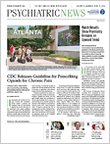Sickle cell disease—it’s not just for hematologists anymore.
In fact, physicians in many other specialties should be aware of what can go wrong inside the brain of a young patient with sickle cell disease, said neurologist Eboni Lance, M.D., co-medical director of the Sickle Cell Neurodevelopmental Clinic at the Kennedy Krieger Institute and an assistant professor at the Johns Hopkins University School of Medicine in Baltimore.
Sickle cell disease results from changes in the hemoglobin gene and occurs in 1 in 365 births of people of African ancestry, according to the Centers for Disease Control and Prevention. There are about 100,000 cases in the United States.
Among other conditions, children with sickle cell disease often have problems with cognition, language, and fine motor tasks, said Lance in a recent presentation at the Kennedy Krieger Institute.
Those problems usually are attributed to socioeconomic status or the result of chronic illness that leads to school absence or psychological problems. However, they may result from the ongoing, but poorly recognized neurologic injury caused by the disease, suggested Lance.
The key may be stroke, which often occurs in sickle cell patients, she said. The sickled cells cause damage to blood vessels, initiating an inflammatory cascade that can lead to either hemorrhagic or ischemic strokes.
However, a less familiar but more important process also goes on in the brains of affected young people, said Lance.
“Tiny, silent cerebral infarcts occur in about one-third of the [sickle cell] population younger than 13 years,” she told Psychiatric News. “We see no acute stroke symptoms in this group, but later they have problems in school.”
Studies indicate that patients whose parents have higher educational or socioeconomic status also experience these cognitive declines, said Lance. “This shows that the cognitive decline is not explained by overt stroke, family status, or other factors.”
Lance and colleagues from Kennedy Krieger and Johns Hopkins conducted a retrospective chart review of 59 patients at the two institutions. Results varied by sickle cell subtype. Just two (6 percent) of the 36 patients with hemoglobin SS recorded attentional symptoms, compared with three of six (50 percent) of those with hemoglobin S-β plus thalassemia and none of the patients with hemoglobin SC.
“Currently, we do neurodevelopmental screening only in cases of stroke or other complications,” she said. “If we could screen earlier, we could pick up these silent strokes earlier and treat them.”
At present, routine neurodevelopmental evaluations of children with sickle cell disease are not recommended, limiting insurance reimbursement. Studies in larger cohorts might provide more robust data to support that suggestion. They might also provide clues to other observations, like the low rates of autism among the sickle cell population or the equal rates of attention-deficit/hyperactivity disorder among boys and girls with the disease.
Closer attention to what happens in the young patient’s brain could help now, though, given treatment advances in recent decades. Further development of serum biomarkers and advanced neuroimaging techniques would be valuable, too.
“It’s important to look at brain injury as a possible cause for any changes in a child’s neurological, psychological, academic, or other status,” said Lance. “You always have to rule out brain injury with neuroimaging or neurodevelopmental or neuropsychological testing. So before going to other causes for any sort of decline or decrease in status, physicians should screen for neurological injury. That is what has been missed for too long and overlooked too many times.” ■
An abstract of “Risk Factors for Attention and Behavioral Issues in Pediatric Sickle Cell Disease” can be accessed
here.

